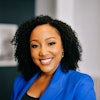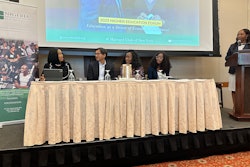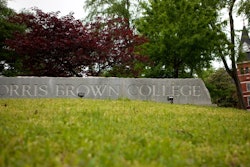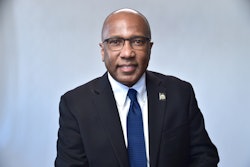UNCF Chief Makes Case for National Policy on International Education
By Tony WashingtonSAN ANTONIO
Although William H. Gray III, president of the United Negro College Fund, joked with NAFSA conference attendees that the Baptist minister in him could easily extend his allotted speaking time, he was preaching to the choir when he extolled an audience of international educators on their work in encouraging students to study abroad.
“You are developing citizens of the world who’ll understand the global village,” Gray told participants. “You are developing citizens of the world who have the experience to address global and strategic needs. You are strengthening the world to solve global problems.”
Gray delivered his plenary address during the business meeting of NAFSA, a national organization promoting the exchange of students and scholars to and from the United States. Members of the association gathered in San Antonio in late May for the 54th annual conference featuring a distinguished lineup of speakers and an International Education Expo with more than 250 exhibitors.
In his address, Gray echoed the association’s mission emphasizing the importance of internationalizing every student’s education.
“It’s rare to find a college student today who has specific expertise in another part of the world,” he said. “It’s also hard to find one who is proficient in a second language.” On the bright side, he said, international education programs enjoy positive public opinion. For example, 83 percent of Americans believe international programs enrich campus life.
But despite America’s professed support, many still think of studying abroad as a luxury for those who can afford it. As a result, the United States has fallen considerably short in bridging the gap between voicing support for international education and committing resources to make studying abroad an integral part of the college experience.
Gray said the government, private sector and education system all have a role to play in promoting international awareness and education.
As globalization continues to shrink borders and expand markets, nations face increasing conflicts — political, financial, religious and cultural. In the wake of these challenges, the real question is no longer why international study programs are important, but how long America can afford not to be investing in them, Gray said.
Although Gray will find allies in the mainstream push for international education, his role as president of a national fund supporting Black colleges and universities will lend a strong minority voice to the discussion on a national policy.
“As we strive to provide international and intercultural competencies to the next generation of leaders, it is important that all be included,” says Dr. Geremie Sawadogo. “Including minority students will not only provide useful skills to the participants but will also help address stereotypes that still persist abroad about minorities in the U.S.”
Sawadogo, director of international and intercultural education at Maricopa Community Colleges, agreed that resources were tight for students of color. “Because they are carried out overseas, participants cannot engage in work-study and other income-generating activities,” Sawadogo said.
Of all the students who studied abroad during 1999, Gray reported that 3.3 percent were African American, 5.2 percent were Latino and 4.4 percent were Asian Americans. According to Gray, no Black college ranked in the top 20 of colleges sending students to study abroad. And no college serving minority communities ranked in the top 50 of colleges with international programs.
© Copyright 2005 by DiverseEducation.com





















